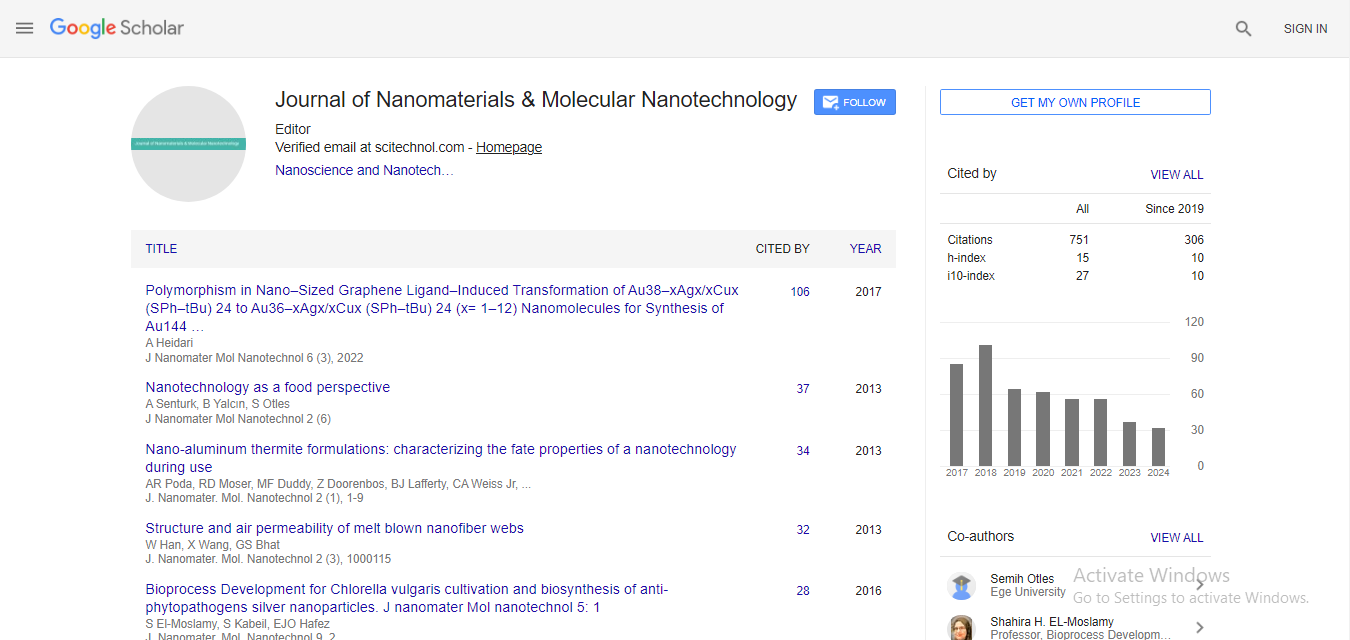Probing atherosclerotic plaque permeability using fluorescent blood pool agents in ApoE(-/-) mouse model
Claudia Cabella
Bracco Imaging SpA, Italy
: J Nanomater Mol Nanotechnol
Abstract
Introduction: Atherosclerosis is a progressive disease characterized by accumulation of lipids and fibrous elements in the large arteries, causing the formation of atherosclerotic lesions. With the progression of the disease, plaques can become increasingly complex, showing different elements of dangerousness as thin fibrous cap, lipidic necrotic core, ulcerations at the luminal surface and haemorrhages. Currently, several imaging techniques are able to identify plaques in humans but not to clearly define composition as a predictor of an acute event, causing difficulties on the definition of a proper treatment. In particular, a diagnostic tool aimed to stratify plaques with respect to different permeability (i.e. different dangerousness) could help clinicians to predict the response to a drug-loaded nanosystem based therapy. Aim: The aim of this study was to investigate the plaque endothelial local permeability in the ApoE-/- mouse model with optical imaging using fluorescent blood pool agents. Methods: A human serum albumin conjugated with Cy5 (HSA-Cy5) and an albumin binder conjugated with IrDye800 (B26170) were administered to ApoE-/- mice at different weeks of feeding with high fat diet. Arterial trees were removed, imaged with a fluorescence microscope system and then histologically processed. Results & Conclusions: Plaques developed in different districts of the arterial tree were classified through a grading index (between one and three) with respect to their morphology and displayed higher macrophage content at the early stage of development. Both the fluorescent probes showed higher permeation in early plaques than in more advanced ones, thus correlating with a high inflammatory state. The proof of concept that nano-based systems are able to probe permeability of atherosclerotic plaques, defining which ones are suitable for an anti-inflammatory therapy based on drug-loaded nanoparticles, was reached through OI and could be relatively easily translated in a clinical tool for MRI with the use of a proper Gd-based blood pool agent.
Biography
Claudia Cabella completed her Graduation in Chemistry and PhD in Biochemistry. Since 2001, she works at Centro Ricerche Bracco (CRB, Bracco Imaging SpA) being involved mainly in the field of Magnetic Resonance Imaging and Optical Imaging. Her main skills are preparation of cell cultures and related tumoral animal models and use of MRI and OI scanners. She worked on MRI and OI projects focused on tumoral targeting with different paramagnetic and fluorescent probes and in particular, she worked as a partner in the European research project NanoAthero on a specific task aimed at identifying blood pool agents for atherosclerotic plaque stratification.
Email: claudia.cabella@bracco.com
 Spanish
Spanish  Chinese
Chinese  Russian
Russian  German
German  French
French  Japanese
Japanese  Portuguese
Portuguese  Hindi
Hindi 



